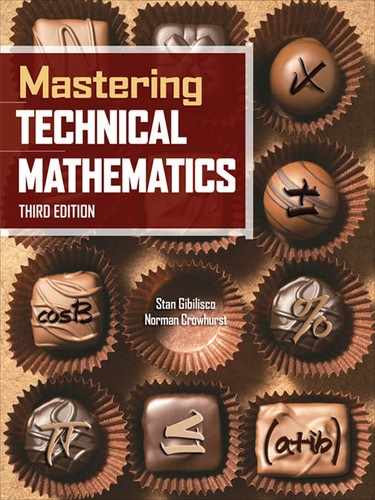Introduction
This book is intended as a refresher course for scientists, engineers, and technicians. It begins with a review of basic calculation techniques and progresses through intermediate topics in applied mathematics. This edition contains new or revised material on scientific notation, geometry, trigonometry, vectors, coordinate systems, logarithms, exponential functions, propositional logic, truth tables, statistics, and probability.
You’ll notice that some of the discussions, especially in the early chapters, deal with archaic units such as feet and pounds. This isn’t sheer madness or nostalgia for the olden days; there is a reason for it! The unfamiliarity (and in some cases strangeness) of these “English” units can help you more fully grasp the principles relating the phenomena the units describe.
Ideally, you’ll have worked with all the material you’ll see in this book, or at least seen it in some form. If something here is alien to you—for example, propositional logic—consider taking a formal course on that subject, using this book as a supplement. What if you took logic from your Alma Mater 20 years ago? Are the concepts still in your mind but no longer fresh? In that sort of situation, this book can bring things back into focus, so you can again work easily with concepts you learned long ago.
Each chapter ends with a Questions and Problems section. Refer to the text when solving these problems. Answers are in an appendix at the back of the book. In some cases, descriptions of the problem-solving processes are given in the answer key. Of course, many problems can be solved in more than one way. If you get the right answer by a method that differs from the scheme in the answer key, you might have found a better way!
In recent years, electronic calculators have rendered much of the material in this book academic. To find the sine of an angle, for example, you can punch it up on a calculator you bought at a grocery store and get an answer accurate to 10 significant figures. Personal computers have “calculator” programs that can go to many more digits than that. Nevertheless, it’s helpful to understand the theory involved. You should at least read (if not painstakingly study) every chapter in this book.
Most people are strong in certain areas of mathematics and weak in others. If your job involves the use of math, you’ll need proficiency in some fields more than in others. When you use this book as a refresher course, keep in mind that you might need intensive work on subjects that you don’t like or that you have trouble grasping.
The material here is presented in a condensed format. You’ll sometimes think that your progress must be measured in hours per page. If you get stuck someplace, skip ahead, work on something else for awhile, and then come back to the “trouble spot.” Of course, you can always refer to more basic or subject-intensive texts to reinforce your knowledge in those areas where you are not confident.
Suggestions for future editions are welcome.
Stan Gibilisco
..................Content has been hidden....................
You can't read the all page of ebook, please click here login for view all page.
